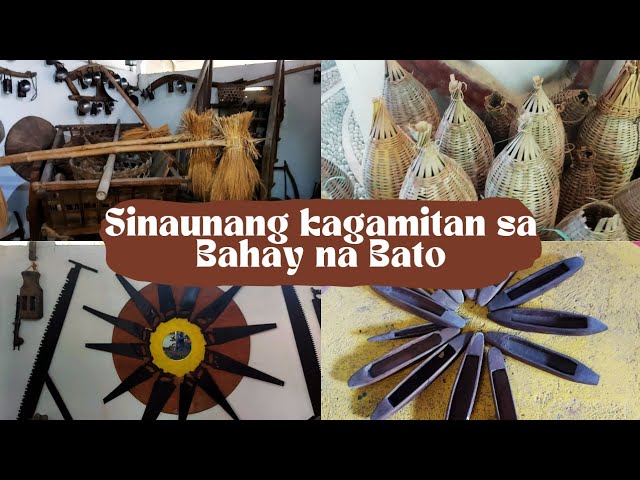
In the Philippines, the concept of "lumang gamit sa bahay," literally translated as "old things in the house," holds a unique significance. It's more than just clutter; it's a tangible link to the past, a repository of family history, and a testament to resourcefulness. This exploration delves into the multifaceted nature of these vintage household items, uncovering their cultural importance, practical applications, and the creative ways they can be reimagined for modern living.
Unlike the Western emphasis on minimalism, Filipino households often retain items long past their perceived prime. This isn't simply hoarding; it's a cultural practice rooted in resourcefulness, sentimentality, and a deep respect for the past. These items, imbued with memories and stories, contribute to a sense of continuity and connection across generations. From antique furniture to repurposed containers, each object whispers tales of family gatherings, festive celebrations, and everyday life.
The history of retaining old household items in the Philippines is intertwined with the nation's economic and social landscape. In a culture where resources were often scarce, discarding functional items was considered wasteful. This practicality fostered a culture of repurposing and repair, transforming old clothes into rags, broken furniture into quirky decor, and empty containers into ingenious storage solutions.
The importance of "lumang gamit sa bahay" transcends mere utility. These objects serve as tangible reminders of family history, connecting the present generation to their ancestors. A grandmother's sewing machine, a father's worn-out toolbox, or a mother's collection of vintage plates – each piece carries a story, contributing to a rich tapestry of family heritage. They act as physical embodiments of memories, fostering a sense of belonging and continuity.
However, managing these inherited treasures can present challenges. Space constraints in modern homes often clash with the desire to preserve these items. Furthermore, the passage of time can take its toll, leading to deterioration and damage. Striking a balance between preserving heritage and managing practicality is a key consideration for many Filipino families.
Repurposing old items is a common practice. For instance, old wooden crates can be transformed into stylish bookshelves, while vintage glass bottles can become unique vases or pendant lights. This creativity not only extends the lifespan of these items but also adds a touch of unique character to the home.
Benefits of embracing "lumang gamit sa bahay" include: 1. Sustainability: Repurposing reduces waste and promotes environmentally conscious living. 2. Cost-effectiveness: Reusing existing items eliminates the need for new purchases. 3. Unique aesthetic: Vintage pieces add character and personality to a home.
Advantages and Disadvantages of Lumang Gamit sa bahay
| Advantages | Disadvantages |
|---|---|
| Sentimental Value | Space Constraints |
| Cost Savings | Potential for Damage/Decay |
| Unique Aesthetic | Maintenance Requirements |
Five real examples of "lumang gamit sa bahay" include antique wooden chests used as coffee tables, repurposed glass jars as kitchen storage, old sewing machine tables transformed into desks, vintage photographs framed as wall decor, and old family recipes handwritten on index cards preserved as treasured keepsakes.
Frequently Asked Questions:
1. What is "lumang gamit sa bahay"? - It refers to old or vintage household items.
2. Why is it important in Filipino culture? - It represents family history and resourcefulness.
3. How can I repurpose old items? - Get creative! Turn old bottles into vases or crates into shelves.
4. How can I preserve old items? - Proper cleaning and storage are crucial.
5. What are the challenges of keeping old items? - Space constraints and potential damage are common issues.
6. What are some repurposing ideas? - Old clothes can be made into rugs, jars into storage, etc.
7. Where can I find inspiration for repurposing? - Online resources like Pinterest and DIY blogs offer great ideas.
8. How do I balance preserving heritage with practicality? - Prioritize items with sentimental value and repurpose others creatively.
Tips and Tricks: Regularly clean and inspect old items. Store them in a cool, dry place away from direct sunlight. Research proper restoration techniques for antique pieces.
In conclusion, "lumang gamit sa bahay" represents more than just old items; it's a tangible connection to the past, a testament to Filipino resourcefulness, and a source of creative inspiration. While managing these inherited treasures presents challenges, the benefits of preserving family history, promoting sustainability, and adding a unique touch to your home far outweigh the difficulties. By embracing the potential of these vintage pieces, we not only honor our past but also create a more sustainable and meaningful present. Take a closer look at the "lumang gamit" in your own home. What stories do they tell? What new life can you breathe into them? Embrace the history, the creativity, and the connection to your heritage that these treasured possessions offer. They are not just old things; they are stories waiting to be retold.
Unlocking the secrets of the duke dennis cologne collection
Electrifying efficiency navigating the world of used plug in hybrid rav4s
Unlocking the world of gacha custom and coffee apk













